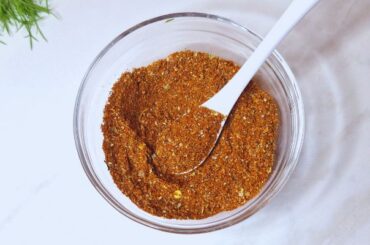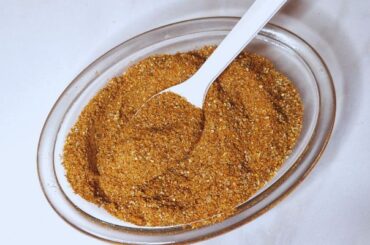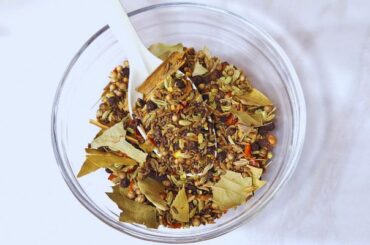Originating from Southern France, the ingredients of Herbes de Provence consist of aromatic and richly flavored herbs. Thus, we are ready to share information beyond the basics about this comforting herbal blend.
This mix does not have a standard recipe as it could vary from person to person and brand to brand. But, usually, most of the commercial and homemade recipes contain ingredients like:
In addition to the above mentioned herbs, most American variations may also include lavender, fennel, fennel seeds, chervil, parsley, and sage.
So, here’s all that you need to know about this beautifully fragrant and delicious blend!
What Ingredients Are In Herbes de Provence?
The majority of Herbes de Provence ingredients consist of dried herbs, while some variations include fennel seeds, which is a spice. This aromatic blend is a staple in French cuisine and also goes perfectly well with many Mediterranean dishes.

This mix does not typically contain salt or any other additives but is completely flavored with the goodness of herbs and sometimes spices. So, let’s dig in!
01- Rosemary
Rosemary is a key ingredient in this blend which offers an unforgettable fragrance. This herb has a unique piney-lemon flavor with peppery, woodsy, slightly bitter and astringent notes.
Rosemary literally plays a significant role in the mix as a little amount of it goes a long way when used in a dish. This herb pairs well with other ingredients in the blend, like oregano, thyme, basil, etc.
Hence, when combined with them, the flavor of rosemary complements food like chicken, turkey, lamb, and stews. Moreover, it is also a perfect addition to Mediterranean dishes.
02- Thyme
Thyme is another ingredient that shows up in most of the basic/traditional Herbes de Provence recipes. This herb gets along with other herbs in the mix, like rosemary, oregano, basil, tarragon, and parsley.
Thyme actually has a bold taste. And it holds a more mint-like flavor along with floral, earthy, somewhat peppery, and sweet hints. When blended with other ingredients in Herbes de Provence, this herb can very well complement the roasted, braised, or baked chicken.
In addition, you can sense a significant taste enhancement in some seafood recipes and certain meats when used as a dry rub.
03- Marjoram
Teaming up with most ingredients, marjoram is another remarkable herb that we can taste in this mix. It is usually gentle enough to balance other intensely flavored elements in our topic leader.
Marjoram tastes a lot like thyme, but it is sweeter and more robust in its aroma. It has floral and citrusy notes with fresh, warm, earthy, woodsy, slightly bitter, and sharp undertones.
This herb backs up the flavors, particularly oregano and thyme. Accordingly, it will give a depth of taste to many vegetables, poultry, and meat dishes, especially the ones with a Mediterranean touch.
04- Savory
The herb savory can be found as summer savory and winter savory with slight flavor differences. However, most Herbes de Provence recipes employ summer savory since it has a peppery and a hot flavor profile with hints of marjoram, thyme, and mint.
When compared with other herbs in the mix, savory has a very distinctive taste. It goes well with many other ingredients in the blend, like basil, oregano, thyme, rosemary, parsley, etc.
Combined together with the flavors of these herbs, savory undoubtedly provides a great kick to lamb, chicken, and pork. Specifically when you use this herbal mix as a dry rub or in marinades.
05- Tarragon
Just like rosemary, tarragon is also a top-notch ingredient in our topic leader and is known for its incredible aroma. This is also a staple in French cuisine and is, therefore, the main ingredient in this mix too.
Tarragon has a complex flavor with robust licorice notes. It is fresh, delicate, and possesses bitter-sweet hints with mint, vanilla, and pepper touches. This herb usually pairs with basil, parsley, and thyme in the blend.
Consequently, when its subtle flavor is mixed with the other ingredients, it could complement various meat dishes, spring vegetables, soups, and stews.

06- Oregano
Oregano is earthy and bold compared to other herbs in this mix. And it has a subtle bitterness with slight camphor notes. The very uniqueness of this herb is one of the main reasons why it has become an integral part of Herbes de Provence.
Oregano’s potent flavor profile has the capacity to overpower the taste of other ingredients in the blend effortlessly. Therefore, other flavorful herbs like marjoram, savory, and tarragon are paired with it.
Thus, when combined, this herb can collectively become a great additive to many spicy meat dishes like lamb or mutton. It also complements chili peppers and certain types of fish.
07- Basil
Basil is fragrant and adds its pure essence to this herb mix in many ways. Being another one of the basic Herbs de Provence ingredients, basil has shown up constantly in many recipes lately.
Its flavor is not complicated. In fact, basil has a mild and fresh taste with a slight sweetness. The flavor is not overwhelming and thus goes with a majority of herbs used in the mix.
Particularly when paired with savory, marjoram, oregano, and thyme, basil complements vegetables, meat, and seafood equally.
A spoonful of herbs in your meals not only enhances the taste but also improves the quality of life
SpiceRally
Wrapping Up With The Lavish Herbes de Provence Ingredients…
Herbes de Provence has also spread its excellence to Western cooking by becoming a close culinary companion in French and Mediterranean cuisines. The amazing blend of rosemary, thyme, marjoram, savory, tarragon, oregano, and basil makes this mix rich in taste. And optional ingredients that show up in most American versions like fennel, chervil, lavender, fennel seeds, parsley, and sage make it even better!




